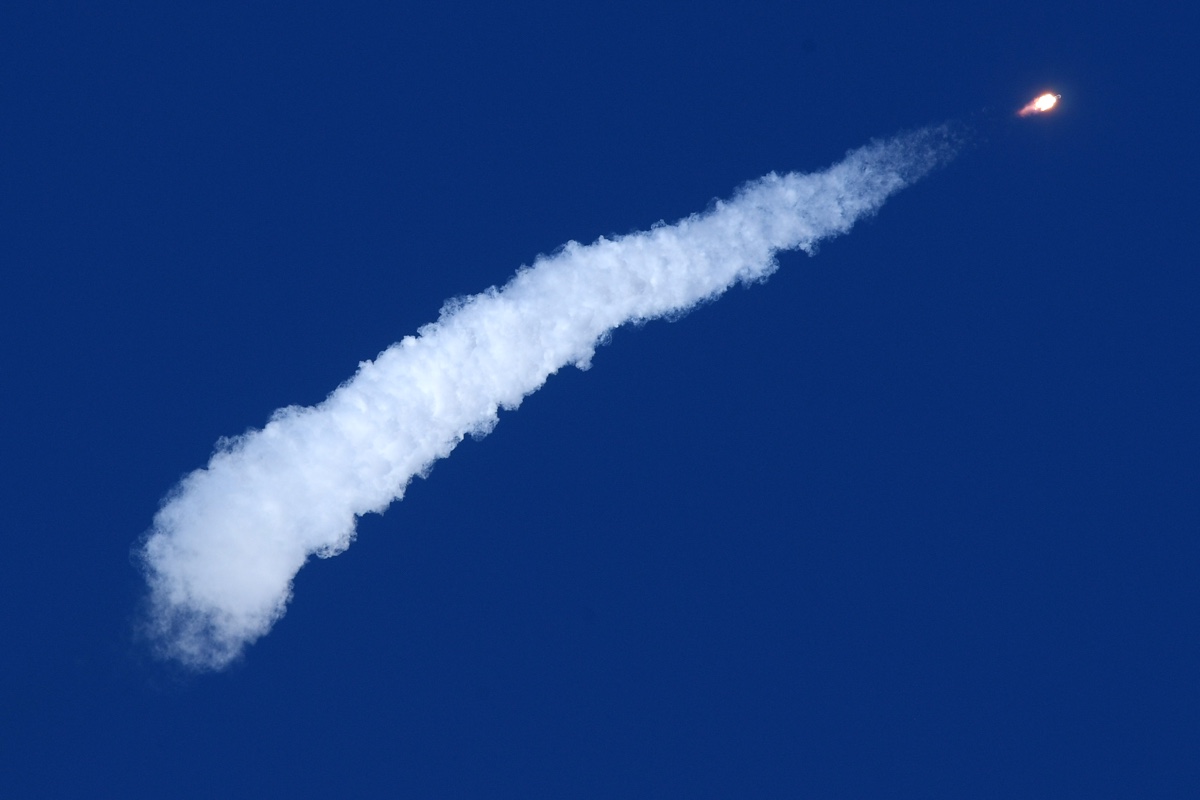Astronaut and Cosmonaut Survive 'Ballistic' Fall to Earth After Failed Soyuz Launch
NASA and Roscosmous attempted to send two new crew members to the ISS aboard a Russian Soyuz spacecraft early this morning (Oct. 11). The attempt went very wrong.
But NASA TV reports that astronaut Nick Hague and Alexey Ovchinin are "in good condition" after a booster problem resulted in their Soyuz spacecraft making an unexpected, sharp return to Earth.
As of 6:09 a.m. ET, NASA representative Brandi Dean reported on NASA TV that, according to Russian officials, search and rescue teams had reached the crew and that they had emerged from the unexpectedly downed capsule. Search and rescue teams were reportedly "working with them to get them ready to leave."
Earlier, just minutes after the 4:40 a.m. ET launch, a problem occurred with one of the boosters carrying the Soyuz capsule to space from its launch site in Kazakhstan.
That led to the Soyuz falling back to Earth in what NASA termed "ballistic descent mode" at "a sharper angle than we would try to land via."
Nonetheless, by 5:20 a.m., Dean had reported over NASA TV that the crew had made contact with a search and rescue team and were, at least according to Russian sources, "in good condition."
Dean has repeated that precise wording several times.
Sign up for the Live Science daily newsletter now
Get the world’s most fascinating discoveries delivered straight to your inbox.

According to Dean, this sort of landing would have subjected the crew to g-forces higher than what they would normally have to withstand, but was within the realm of "modes that we're familiar with" and that crews have dealt with before.
On April 19, 2008, a Russian Soyuz returned from a successful trip to the ISS in much rougher fashion than usual. The crew of three went through a descent that NASA similarly described as a ballistic trajectory. In similar fashion to what NASA described today, the spacecraft entered the atmosphere at a steeper angle than typically intended, in what Live Science sister site Space.com reported was an "uncontrolled spin."
That descent subjected NASA's Peggy Whitson, Russian cosmonaut Yuri Malenchenko, and South Korean astronaut So-yeon Yi to more intense g-forces than usual and deposited them safely but far afield of their intended landing site.
Then as now, however, NASA emphasized that the landing itself wasn't out of control, but rather it was one of several backup modes that crews train for and for which the spacecraft is designed.
In an interview later published on NASA's website, astronaut Alexander Kaleri, who was not part of the crew, said of that ballistic descent, "This was not a failure, as you understand; it was not a failure per se, it was one of the possible modes of descent."
These sort of landings used to be the norm, and in fact expected, in the early days of spaceflight. As Florida Today reported in 2008, in the early 1960s, Mercury astronauts and Vostok cosmonauts used the atmospheric drag of ballistic trajectories to slow their spacecraft enough to safely deploy parachutes.
Now, however, Soyuz enters such a trajectory only as a backup when other systems have failed. And the experience can be dramatic; Whitson reported reading 8.2 gs "on the meter" during her ballistic descent. That means she and her crew were subjected to forces 8.2 times the strength of Earth's gravity. In that environment, a 150-pound (68 kilograms) person would feel as though they weighed 1,230 pounds (558 kg).
The last time a Soyuz mission was aborted was Sept. 26, 1983, when a rocket became engulfed in flames on the launchpad more than a minute before launch. Crew members fired emergency rockets close to the last possible moment, ejecting the crew vehicle to safety.
Originally published on Live Science.










